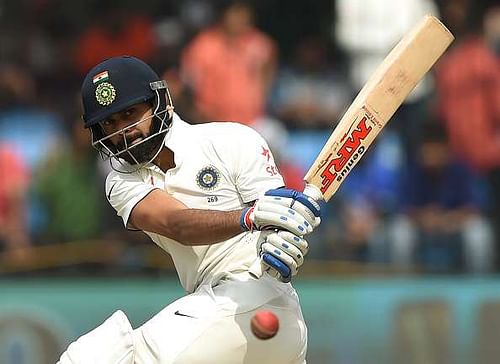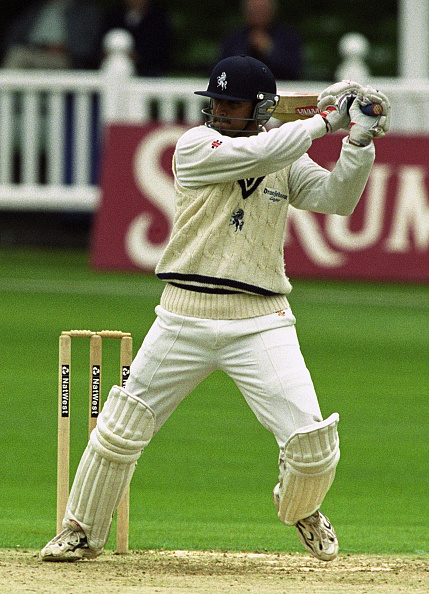
Why the Indian players should play County cricket

It certainly won’t be an overstatement to say that the Indian Test side is at the very peak of their powers. The Indians have had an emphatic home season, handing comprehensive defeats to the likes of New Zealand, England and Australia. The Test side looks solid and stable with the top-order piling on the runs, the middle order adding significantly to the contributions made by the top-order, and the Indian seamers performing very well.
Ashwin’s contributions speak louder than words and many have called him a contemporary great, while Ravindra Jadeja has shown discipline with the ball and the bat.
But, most of these players have only delivered the goods while playing on home soil and haven’t performed during overseas tours. In 2014, the Indians had gone down like a pack of cards when they toured England and suffered a 3-1 thrashing. As the ‘red cherry’ swung in England, the Indians found it hard to tackle the English bowlers on the seamer-friendly tracks.
The South Africans are scheduled to tour England in 2017. In the Proteas team, quite a few players have been a part of English county sides in recent times. JP Duminy has had a stint with Surrey, Vernon Philander has played for Middlesex, Faf du Plessis has represented Lancashire, while Hashim Amla has had a stint with Essex.

On the other hand, only a handful of Indian players in the current Test side have had the ‘privilege’ of representing English county sides. Cheteshwar Pujara had a stint with Yorkshire in 2015 after having failed to attract bids during the IPL auction. His return to form can be credited to his time with English county side.
When the Indians toured England back in 2007 and made the Englishmen bite the dust, several players in the squad member had enjoyed a stint in county cricket. Sachin Tendulkar (Yorkshire) scored over 1000 runs in 1992, while Rahul Dravid played for Kent in 2000 and also notched up 1000 runs for the club and became the club’s leading run-getter that year.

Virender Sehwag scored 478 runs in six county Championship matches for Leicestershire in 2003, immediately after the 2003 World Cup. These players had spent some quality time in English cricket and these stints acted as major building blocks in their illustrious cricketing careers.
Playing in Ranji Trophy doesn’t allow Indian players to go out of their comfort zones and get access to those spicy and lively English pitches. Another problem with the current generation of cricketers is that they’re too busy playing for their respective franchises.
Earlier, the summer used to be reserved for playing county cricket in England. But with the lucrative and cash-rich Indian Premier League coming into existence, playing for county sides seems to have taken a backseat. The charm and the glamour of the IPL is too formidable to be disrupted.
The Indians have just finished a long and tiresome home season (October-March), followed by the IPL, which began in the first week of April and will end in May. The ICC Champions Trophy is scheduled to be played in England in the month of June, followed by the Indians touring Sri Lanka to play 3 Tests, 5 ODIs and a T20 match. A packed schedule such as this leaves no room for playing county cricket.

A stint in English county cricket would allow the likes of Virat Kohli, Ravindra Jadeja and Murali Vijay to get accustomed to playing the short ball.
Rohit Sharma, who is just recovering from an injury and does not feature in the Test team’s plans, is a formidable force when he bats on the slow Indian and spin-friendly tracks, but turns into an ordinary batsman when it comes to performing overseas. A season or two in English domestic circuit would allow him to eliminate his weakness of getting beaten against out-swinging deliveries outside the off-stump.
The spin duo of Jadeja and Ashwin, who have been instrumental in India’s recent success, are incredibly difficult to play when the ball begins to grip and turn, and are almost unplayable. But their prowess with the ball in hand can only be seen on Indian turfs. The variations they produce appear harmless on seaming wickets outside the sub-continent. A county season in England would act as an ideal training ground for them to learn the art of bowling spin in varied conditions.
If Virat Kohli wants a taste of victory outside the sub-continent, he needs to possess a pace bowling unit capable of taking 20 wickets in a match. Ishant has blown hot and cold for the most part of his career. Bhuvaneshwar Kumar can swing the ball both ways but lacks a bit of extra pace to befuddle and surprise batsmen. Umesh Yadav is perhaps the best among them and has bowled with renewed vigour and firepower, while Mohammed Shami has grown by leaps and bounds.

The Indian fast bowlers have potential to be a potent force outside the subcontinent but would learn quite a few new skills if they are a part of an English county side.
This is something Zaheer Khan did really well. After hitting a rough patch in 2006, the left-arm fast bowler played for Worcestershire on the seaming, bouncing tracks of England. He scalped 78 wickets in the County Championship for Worcestershire and followed it up with an impressive show in the limited overs format as well, pocketing 28 wickets in 14 matches. He honed his skills and came back all guns blazing into the Indian side.
Some tough calls are the need of the hour if the Indians want to fare well in seaming conditions. Virat Kohli himself stated that he’s keen to have a stint in county cricket as he aims to prepare for his next outing in England in 2018.
It won’t be wrong to say that county cricket would act as an ideal training ground for Indians, but it seems next to impossible for the Indian players considering their hectic and jam-packed schedule.